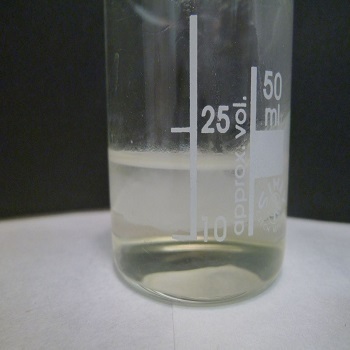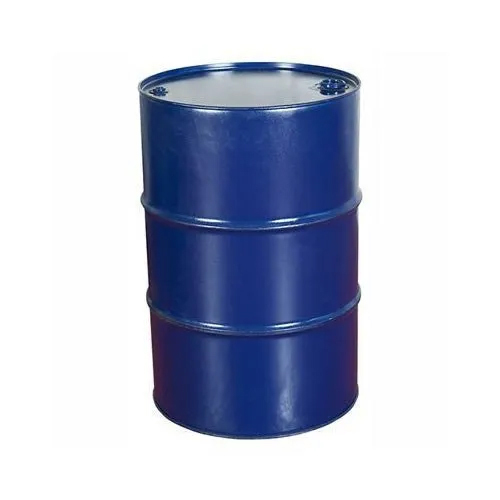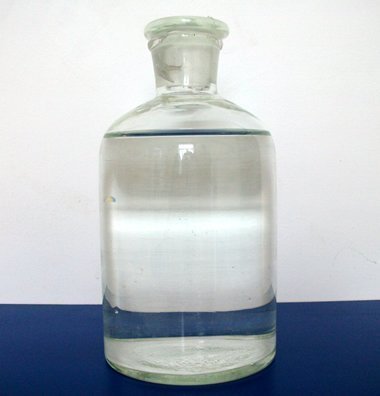Welcome to Our Company
Trimethylamine HCL
Product Details:
- Storage Room Temperature
- CAS No 593-81-7
- Grade Technical Grade
- Ph Level below 7
- Molecular Formula (CH3)3N
- Application Industrial
- Physical Form Liquid
- Click to View more
X
Trimethylamine HCL Price And Quantity
- 1 Kilograms
Trimethylamine HCL Product Specifications
- 670 Gram per cubic centimeter(g/cm3)
- Room Temperature
- 593-81-7
- 278 deg C
- Technical Grade
- below 7
- (CH3)3N
- Industrial
- 99%
- Liquid
- 12 Months
Product Description
Trimethylamine HCL is used as suitable ingredient for the production of quarternary ammonium compounds require3d to formulate insect repellant. Being versatile by composition, this chemical serves as a strong phase transfer catalyst, cationic starch reagent, floating agent, warning factor for natural gas, etc. It is hygroscopic by nature. It is, therefore, needs to be stored in airtight container to avoid its exposure to moisture. This chemical can not integrate with water and oxidizing agent. This hydrochloride chemical easily dilutes in water. It dissolves in chloroform in moderate amount and also in C2H5OH. This chemical does not dissolve in ether.
Properties of Trimethylamine HCL:
Trimethylamine hydrochloride (TMA HCl) is a chemical compound with the molecular formula (CH3)3N.HCl. It is the hydrochloride salt of trimethylamine (TMA), which is a colorless, flammable gas with a fishy odor. Trimethylamine hydrochloride is a solid crystalline material that is readily soluble in water and other polar solvents. Here are some key properties of trimethylamine hydrochloride:
1. Physical state: Trimethylamine hydrochloride exists as a white crystalline solid at room temperature and standard atmospheric pressure.
2. Odor: Trimethylamine hydrochloride has a pungent and unpleasant odor, reminiscent of ammonia or fish due to the presence of trimethylamine.
3. Solubility: Trimethylamine hydrochloride is highly soluble in water and forms a clear, colorless to slightly yellow solution. The solubility increases with temperature.
4. pH: When dissolved in water, trimethylamine hydrochloride exhibits weakly basic properties, resulting in a slightly acidic solution (pH below 7).
5. Chemical stability: Trimethylamine hydrochloride is generally stable under normal conditions. However, it may decompose at elevated temperatures or in the presence of strong acids or bases.
6. Uses: Trimethylamine hydrochloride finds various applications in organic synthesis, pharmaceuticals, and as a reagent in chemical reactions. It is also used to prepare certain quaternary ammonium salts and choline chloride.
7. Toxicity: While trimethylamine hydrochloride itself is not considered highly toxic, it is important to handle it with care due to the potential hazards associated with handling strong acids and bases.
8. Handling and storage: Trimethylamine hydrochloride should be stored in a cool, dry place, away from sources of heat and incompatible substances. It is essential to follow appropriate safety guidelines while handling this chemical.
Uses of Trimethylamine HCL:
Trimethylamine hydrochloride (TMA HCl) has several practical uses in various industries and applications. Some of the common uses of trimethylamine hydrochloride include:
1. Organic Synthesis: Trimethylamine hydrochloride is often used as a reagent in organic synthesis to introduce the trimethylamine group (-N(CH3)3) into various chemical compounds. This reaction is useful in the preparation of certain pharmaceuticals, agrochemicals, and other specialty chemicals.
2. Preparation of Choline Chloride: Choline chloride is an essential nutrient for animals, and it is commonly used as a dietary supplement in animal feed. Trimethylamine hydrochloride is a key precursor in the industrial synthesis of choline chloride.
3. Quaternary Ammonium Salt Formation: Trimethylamine hydrochloride is utilized to produce quaternary ammonium salts, which are versatile compounds used as surfactants, disinfectants, and catalysts in various applications.
4. Pharmaceuticals: In the pharmaceutical industry, trimethylamine hydrochloride may be used as a building block for the synthesis of specific drugs and pharmaceutical intermediates.
5. Textile Industry: Trimethylamine hydrochloride can be employed as a chemical intermediate in the production of dyes and other chemicals used in the textile industry.
6. Gas Treatment: In some cases, trimethylamine hydrochloride is used to remove harmful gases, like hydrogen sulfide, from industrial gas streams.
7. Biological Research: In certain biological research applications, trimethylamine hydrochloride can be used to manipulate and study certain biological processes.
8. Analytical Chemistry: Trimethylamine hydrochloride is used in some analytical techniques, such as gas chromatography-mass spectrometry (GC-MS), as a derivatization reagent to enhance the detectability of certain compounds.
It is important to note that trimethylamine hydrochloride should be handled with care, as it can release trimethylamine gas, which has a strong and unpleasant fishy odor. Proper safety measures should be followed while using this compound, and it should be handled in well-ventilated areas or under a fume hood. Additionally, it is crucial to adhere to any local regulations and safety guidelines when working with this chemical.
FAQ:
Q: What is Trimethylamine Hydrochloride (TMA HCl)?
A: Trimethylamine hydrochloride is a chemical compound with the molecular formula (CH3)3N.HCl. It is the hydrochloride salt of trimethylamine, a colorless gas with a fishy odor.
Q: What does TMA HCl smell like?
A: Trimethylamine hydrochloride has a pungent and unpleasant odor, similar to that of ammonia or fish, due to the presence of trimethylamine.
Q: How is Trimethylamine Hydrochloride used in organic synthesis?
A: TMA HCl is often used as a reagent in organic synthesis to introduce the trimethylamine group into various chemical compounds, leading to the synthesis of pharmaceuticals, agrochemicals, and specialty chemicals.
Q: What is the pH of a solution of Trimethylamine Hydrochloride in water?
A: When dissolved in water, TMA HCl forms a slightly acidic solution, resulting in a pH below 7, due to the weakly basic properties of trimethylamine.
Q: Is Trimethylamine Hydrochloride toxic?
A: While trimethylamine hydrochloride itself is not considered highly toxic, it should be handled with care due to the potential hazards associated with strong acids and bases.
Q: What are the storage requirements for TMA HCl?
A: Trimethylamine hydrochloride should be stored in a cool, dry place, away from sources of heat and incompatible substances.
Q: What are the uses of Trimethylamine Hydrochloride in the textile industry?
A: TMA HCl can be used as a chemical intermediate in the production of dyes and other chemicals used in the textile industry.
Q: Can Trimethylamine Hydrochloride be used in biological research?
A: Yes, trimethylamine hydrochloride can be used in certain biological research applications to manipulate and study specific biological processes.
Q: Is TMA HCl used in gas treatment processes?
A: Yes, in some cases, trimethylamine hydrochloride is used to remove harmful gases, such as hydrogen sulfide, from industrial gas streams.
Q: What precautions should be taken while working with Trimethylamine Hydrochloride?
A: Proper safety measures should be followed while handling TMA HCl, as it can release trimethylamine gas with a strong odor. It should be used in well-ventilated areas or under a fume hood, and all local regulations and safety guidelines should be adhered to.
Q: Where can I purchase Trimethylamine Hydrochloride?
A: Trimethylamine hydrochloride is available for purchase from chemical suppliers, laboratory equipment suppliers, and online chemical marketplaces. However, it is essential to have the appropriate qualifications and permits to handle and purchase such chemicals.
Tell us about your requirement

Price:
Quantity
Select Unit
- 50
- 100
- 200
- 250
- 500
- 1000+
Additional detail
Mobile number
Email









